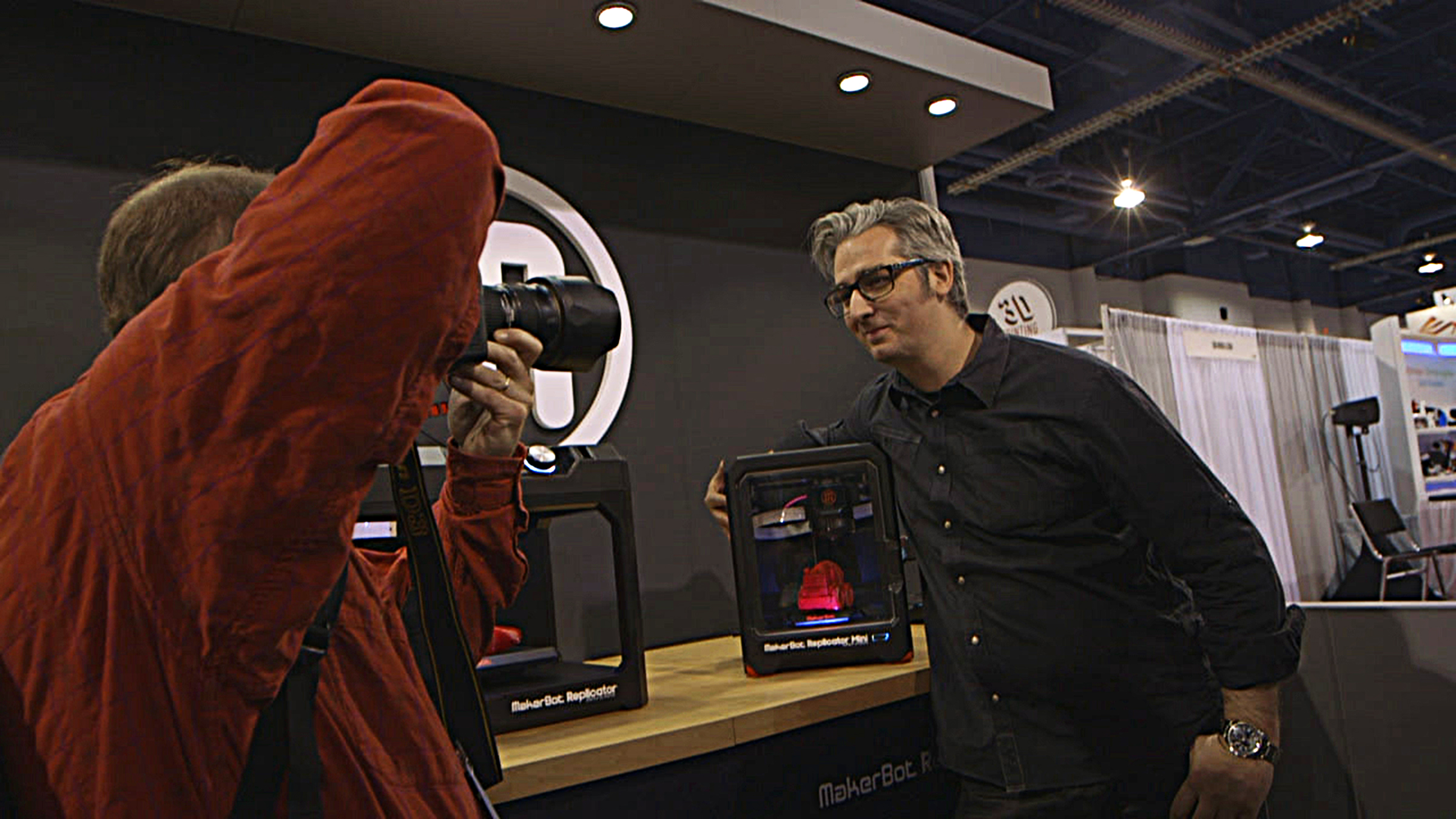MakerBot may not be the biggest tech company in Brooklyn, but when people talk about Brooklyn startups, it’s always on the list.
It may be the one that’s most identified with the borough.
MakerBot has all the elements: a manufacturing component that connects it to Brooklyn’s industrial past, cutting-edge technology, a charismatic leader and a clear line to that whole DIY ethos.
Now Netflix is taking viewers behind the scenes with a new film, Print the Legend, that tells the story of the rise of consumer 3D printing.
Like a lot of documentaries of this sort, directors Luis Lopez and J. Clay Tweel follow several key characters to set up a narrative that may or may not be a bit constructed. That said, the characters are (basically) these:
- Bre Pettis, one of the three cofounders of MakerBot, which grew out of Boerum Hill’s NYC Resistor space.
- Maxim Lobovsky, one of three cofounder of Formlabs, the makers of the Form1, the first consumer-facing stereolithography-driven 3D printer (it is, actually, a different technology than any of the 3D printers made in Brooklyn, capable of a much higher resolution).
- Avi Reichental, owner of 3D Systems, the giant in industrial 3D printing.
- Cody Wilson, the anarchist who shot the first 3D printed gun and who previously designed high-capacity ammo magazines that could be made with 3D printers (these were ultimately removed from MakerBot’s Thingiverse).
There are lots of other people who show up along the way, but that’s the critical cast of characters. The story shows MakerBot rising up from Boerum Hill and how Pettis more and more comes to identify and emulate Apple’s Steve Jobs. The company goes from being a fraction of the market to a fairly big piece, until it’s ultimately acquired by Stratasys, the other big company in this space.
Stratasys hardly shows up in the film, though. The other player is 3D Systems, which first tries to challenge MakerBot during its open source days by making the Cube, a system it still offers but that hasn’t been well received.
There’s a really stunning moment in the film when a PR staffer at 3D Systems is on camera with CNET and Pettis, at CES, and gets seriously condescending toward MakerBot. Time has shown that that antagonism hasn’t really worked.
As MakerBot rises, though, 3D Systems turns its attention to Formlabs, whose campaign on Kickstarter nearly hit $3 million. 3D Systems opts to sue Formlabs (and Kickstarter) for allegedly infringing on its patents.
Meanwhile, Lobovsky and Pettis are shown to have a sort of wary respect for each other, most notably in a scene where Lobovsky introduces himself to Pettis on camera.
###
A larger piece of the story that’s key to our readers, though, is the way in which the personnel at MakerBot and Formlabs shift and change.
There’s change at both, but it’s considerably more dramatic at MakerBot. You learn that a long list of staff who are first presented to you as part of the company have since left, or, in many cases, according to the filmmakers and their interviewees, been fired.
The most compelling of these is Michael Curry, a designer at MakerBot who left sometime after the Stratasys acquisition. Curry says he became troubled by how much more slowly the company moved as it grew up. Then its abandonment of the open source principles MakerBot was founded on seem to shake him. Finally, after the acquisition, he seems to feel it has come to be too much, describing the toll a startup can take on a person.
In a fairly stirring part of the film, he says:
You often hear, especially successful entrepreneurs or CEOs say, ‘We sacrificed so much to get to this point.’ And if you’re not them or if you’ve never seen it done, you tend to believe that they are talking about, ‘Oh, we worked long nights or we didn’t see our families or it was really hard.’
When you hear someone say that after having been through a successful startup, you start to realize that those aren’t the sacrifices they are talking about. They are talking about having sacrificed who they are. They are talking about having to have made compromises with their most deep-seated beliefs, about having to cross lines that they promised themselves they would never have to cross.
If you care about this stuff, it’s really a stirring film and it’s also one that shows a bit more of how the proverbial sausage is made at fast-growing tech startups.
There are some great moments along the way, when you can see the subjects thinking, “Why did we let these guys with cameras in here?” That said, if they hadn’t, we wouldn’t come away with a strong sense of how these companies work. Consider it a peek at how the future’s greatest companies came to be.







